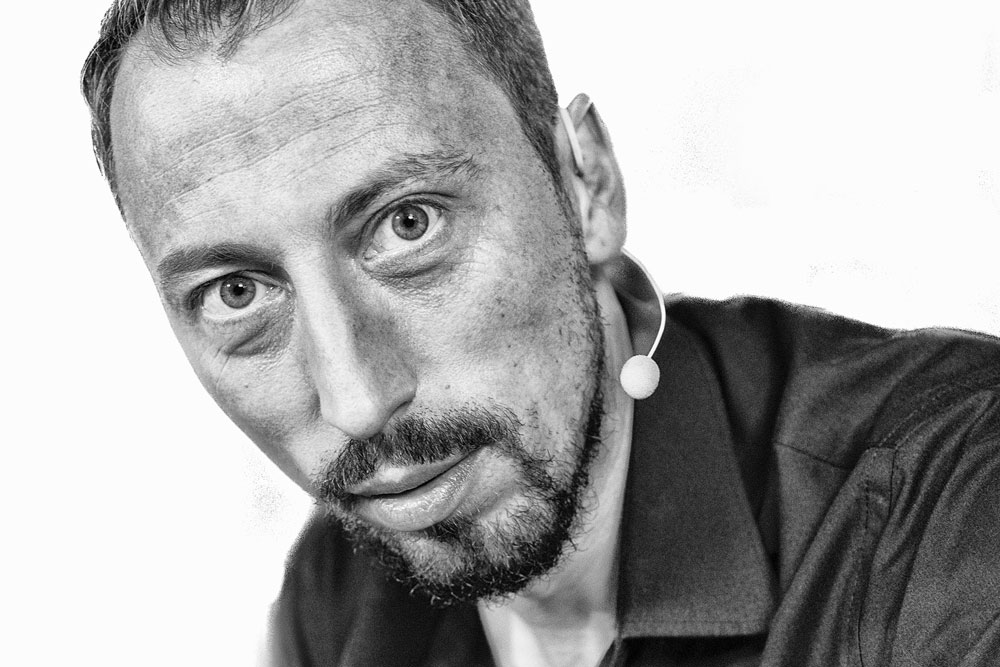
Question: An image with bare shoulders, shot frontally with a neutral facial expression and shown against a uniform skin-colored background. Is such an idea protectable?
Arne Trautmann: Cases like this one tempt us to give simple answers, such as “Ideas are not protectable after all”. Or, conversely, “You can’t just attach yourself to what someone else has created with a lot of creativity and effort”.
And all of that is true, just not always and not always at the same time.
Question: So it’s complicated?
Arne Trautmann: Not complicated really, you just have to look closely. As is often the case in law, the question arises as to which criteria should be used to sort facts and circumstances into which pigeonhole. Let’s just try that here in this specific case. It is important to understand that copyright protects “works”.
Question: When is a photograph a “work”?
Arne Trautmann: A work in this sense is a personal creation of the author, which has intellectual content, a perceptible design and in which the individuality of the author is expressed. The last point is decisive: the more individual and complex a work is, the more it goes beyond the existing creation, i.e. the more significant the level of creation, the greater the scope of protection under copyright law. It is important to realize that this is a legal assessment. Whether the work is then good or artistically valuable, the law is not able to say.
In the case of photographs, the last important point is that they are protected as mere “photographic images” even if they do not attain the quality of a work, i.e. a “photographic work”. However, the protection then does not go very far – the direct adoption of the photographic image is prohibited, but even slight changes establish a sufficient distance.
Due to the deliberate staging and the well-considered use of photographic and artistic means, however, in our case we have photographic works, not “only” photographs.
Question: That actually makes the case clear for us: the people we see are different from those of the Brazilian artist.
Arne Trautmann: The models are not really important here. We first have to look at where the series are similar, where they differ, and then evaluate the result.
What the two series have in common is first of all that they are portraits in which the bare shoulders and part of the upper body can also be seen, so that the skin tone of the model can be well assessed. Both series also determine the skin tone, put it as the background of the image and share the result: In the case of the original series with a specific procedure as a Pantone value. In the case of the new series, only according to visual criteria as a hex code. The image formats are also different, the lighting and the resulting image contrasts are not the same, and in the newer series, information is also provided about the model in a text section.
Question: But that applies to every single picture. Does it make a difference that there are entire series here? After all, Angelica Dass is said to have taken more than 4000 such images.
Arne Trautmann: The first question in our case must be whether the very idea of a series of pictures with the averaging of the skin tone shown is protected.
Now, as mentioned above, copyright protects the work in its concrete form, not the mere idea or the theme of the work. This also applies to styles, techniques and methods: These must be open to all, to be used by any creator. This does not mean, however, that a series conception cannot be protected in certain cases, if it goes beyond the mere idea, exists as a script or has even already been implemented in the corresponding series.
Question: Is this a topic related to photography?
Arne Trautmann: This is often discussed in the case of TV shows. Here the question has great practical significance, since such shows are often developed by specialized production companies and licensed internationally for quite considerable sums. Such shows are composed – quite similar to the picture series in our case – of a multitude of individual elements, which together are then responsible for the overall impression of the series.
In our concrete case, however, we are dealing with a series idea with comparatively few elements, and all of these elements are also not very individual in the sense that they would be new or clearly reach beyond pre-existing creations. The making of an image of a model is an absolute studio standard in photography, and both series offer absolutely no perceptible peculiarities or idiosyncrasies: this has been seen a thousand times in art, but also in advertising. The idea of matching the photo background to the skin color is also not new. To do that exactly as an average value of the skin color and to indicate that accordingly as – Pantone value or Hex code – is interesting, but also not a further creative leap. And in all other elements, the two series are just clearly different.
Question: Is it possible to have individual images protected?
Arne Trautmann: The series concept is one thing, concrete images are something else. Of course, it is conceivable that individual images from the newer series also infringe rights to photographs from the old series. In addition, if an artist creates a large number of photographic works under a very specific guiding star, with a very specific and outstanding idea, then this body of work can certainly condense into something that comes very close to a kind of series protection. Because it then becomes difficult to insert something into the “idea space” of the series that does not also violate the scope of protection of the individual elements of the series of photographs.
However, we do not see such a case here either. Since the individual images are – intentionally – very close to the series concept, we may reject an infringement here with the same reasoning as for the format, also in its individual implementation.
The level of creation of the individual photographs is not really high, since usual and well-known design means are used quite predictably. In view of this, the distance between the works from the original and the new series is also individually sufficient to exclude an infringement.
Thanks you for the clarification!

Tell us about your thoughtsWrite message
You must be logged in to post a comment.